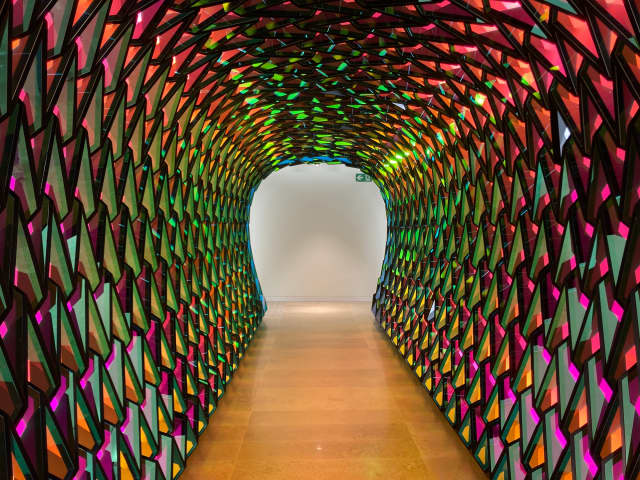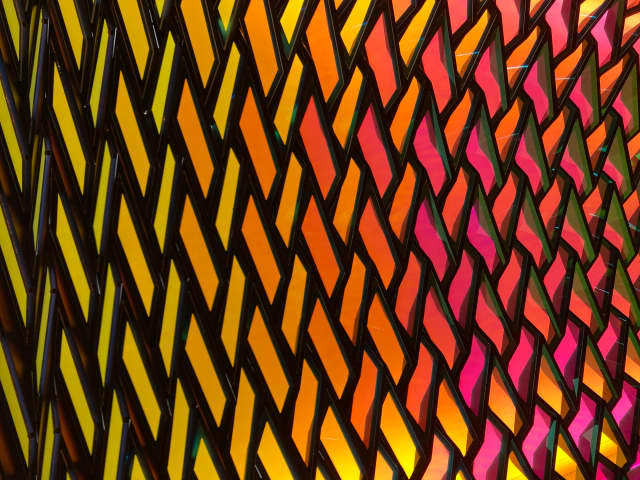Tunnel for unfolding time leads visitors through an approximately eight-metre-long corridor into a gallery of the Herrero Foundation in which another work by Olafur Eliasson is on display. Serving both as entrance and exit to the gallery, the tunnel requires visitors to turn around and go back through it on their way out.
The jagged walls of the tunnel are constructed from quadrilateral panels of colour-effect glass and black, powder-coated steel. The panels, which vary in dimension and shape depending on their position within the structure, are derived from foldable, stackable modules.
Viewed from the entrance, the tunnel appears to glow in a fluctuating array of bright tones that overlap and combine to form unexpected colours. The variations in hue are caused by dichroic, colour-effect glass, a material that reflects certain wavelengths of light while allowing others to pass through it unimpeded. The glass thus appears to be a different colour depending on the angle at which the light hits the glass and the position from which it is seen. Viewed directly, the glass appears pink, with a cyan reflection on the surface; seen from an angle, a range of other colours in the spectrum between the two emerges, including oranges and yellows. As viewers move through the tunnel, the colours change constantly, drawing them onwards. The structure simultaneously seems to expand and contract accordion-like towards either end. This sense of movement is enhanced by parallel curves outlined by the angled panels.
When visitors turn around to exit again, only the matte black backs of the panels are visible, giving the tunnel a muted, dark quality, with hints of colour escaping through the gaps. Visitors who enter through the black end of the tunnel are surprised at the end to turn around and see the bright, polychromatic display revealed behind them.
The work descends from a line of tunnel works that date back to Olafur Eliasson’s early practice, particularly to experiments with foldable geometry undertaken with the late Einar Thorsteinn and evident in works such as Die Dinge die du nicht siehst die du nicht siehst, 2001; Your spiral view, 2002; and One-way colour tunnel, 2007, at SFMoMA. The precise geometry of the work is the result of years of research undertaken at Studio Olafur Eliasson into spirals, stackable modules, and origami-inspired folds.
| Artwork details | |
Title |
Tunnel for unfolding time |
Year |
2022 |
Materials |
Steel, colour-effect filter glass (pink), paint (black), magnets |
| Related | |
| Artworks | |


